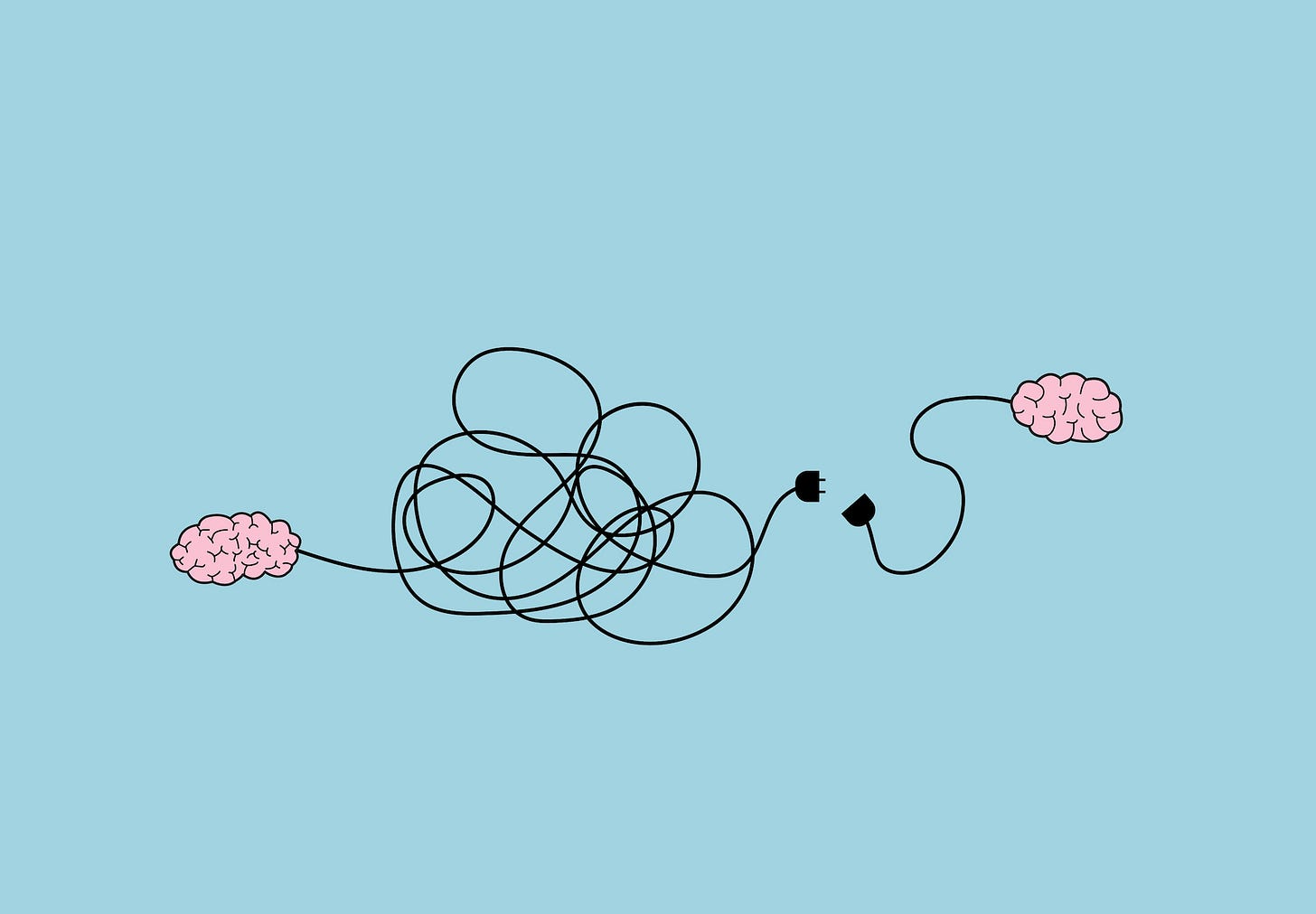Shifting the memory you can't shake
A powerful shift that helps you see difficult memories in a whole new light.
Do you have a memory that still nips at you? Maybe a stranger’s glare, an angry pedestrian, a colleague’s cutting tone. Perhaps it was back at school - a teacher’s public telling-off you can recall in high definition. These moments last for seconds in real time, but can linger for years in your body. I’ve got a life changing reframe to share with you that has had a powerful impact on some of those types of memories.
I’ll share one of those moments. When my 6 year old daughter was tiny, I was running errands in town. I clipped a woman’s ankle with my buggy going into a shop. I apologised at once in my usual way. The thing was, she was furious with me, and kept telling me off as I moved into the shop. My heart raced and no number of apologies seemed to be enough. I wanted to cry. It was over quickly, but it lived on. The scene fused with older memories, being humiliated and bullied by a teacher at primary school, where no amount of shrinking or placating seemed to lessen her issue with me. The memory became a loop I could not quiet. Shame has a way of echoing persistently!
Why do these moments stick?
Our brains are prediction machines. Anything that feels like danger..rejection, humiliation, disapproval, gets flagged as important! Here are other things at play in those moments:
Negativity bias means the brain gives extra weight to threat.
The amygdala fires the alarm; the hippocampus files the scene with emotional intensity, so your body remembers the feeling as if it is still happening (know what I mean? As I recalled that moment years later my heart would race yet again, even though the moment had long passed)
If the moment rhymes with an earlier wound, the brain links them. That is why a stranger’s harshness can feel enormous: you are not only carrying this moment, you are carrying everything it touches.
The reframe that changes the story
Here’s the shift that loosened the memory’s grip. So I played the incident through in my mind as if I were watching a scene in a movie. I kept my part exactly the same…an accidental clip and an immediate apology. and I swapped the other person. I swapped the lady out for someone else.
I imagined her as my kind postman, then my mum, a close friend, my son, the nice stranger who smiled broadly at me in the carpark the other day when I paused to let him by. I even swapped the lady out for myself.
I replayed the scenario through with different people playing the role of the woman, imagining what they’d say.
The responses changed:
Ouch, are you OK? Did it wake the baby?
It happens. Don’t worry.
You didn’t mean it.
The event stayed constant, but the reaction changed. Which shows the reaction was not an absolute judgement of me, it was a reflection of that woman’s capacity, her day, her history, her pain (maybe her foot already hurt?). Simply by switching the person, the whole memory softened and took a totally different tone. The meaning shifted, the shame started to loosen. I contemplated how if it were someone else in that moment, I may have never given it another thought again!
The psychology of why it works
Cognitive reappraisal: By bringing to mind realistic alternative responses, you give your prefrontal cortex fresh evidence. The brain reevaluates the threat and dials down the alarm! I literally feel it in my body!
Memory reconsolidation: Each time we recall a memory, there’s a brief window in which its emotional charge can update. Therefore, introducing new meaning during recall can reduce the sting!
Nervous system safety: Imagining safe, kind responses cues regulation. Your body learns a different ending, and the loop loses power.
A simple practice: The Swap Test
Name the moment. Remember what happened, in one sentence, without judgement.
Keep your part the same. No editing at all!
Swap the person. Imagine three people who are kind, neutral, or boundaried. What would each realistically say or do?
Notice the shift. How does your body feel as the scene changes? What meaning becomes available?
Claim what is yours; release what isn’t. ‘I apologised. Their reaction belongs to them. I can hold compassion for their state without carrying blame that isn’t mine’
Close the loop in the body. Slow exhale; drop your shoulders; press your feet to the floor. Let your body know the scene is over.
Boundaries and accountability
This reframe is not about excusing harmful behaviour or avoiding repair. If you caused hurt, apologise and, if needed, make amends. If someone repeatedly treats you badly, it’s important to set a boundary. The reframe helps you right-size the meaning of a single charged moment; it does not ask you to tolerate mistreatment.
I have used this reframe for so many moments since….even as they happen! The other day a lady gave me an awful look in the post office queue. My body instantly responded with adrenaline and I found myself wondering what on earth I had done wrong. I used this tip, switching her out for another person in the queue who spoke kindly to my son who stood with me. I was an instant balm to something that could have stayed with me for a while longer!



